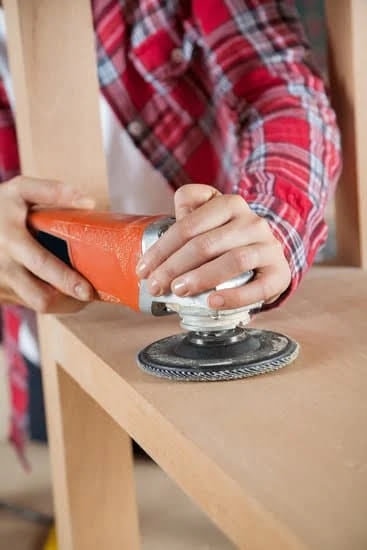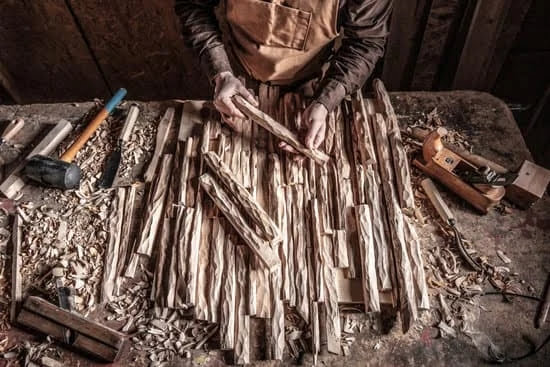Introduction
Woodworking classes for children can be an excellent way to give them the knowledge and skills they need to create beautiful, functional works of art. From simple crafts made with hand tools to advanced projects with power tools, woodworking classes are a great activity for children. Not only do woodworking classes provide valuable practical skills, but they also foster creativity and imagination by allowing your children to use their own ideas to construct unique objects. Additionally, through woodworking classes, children will learn important lessons in problem-solving, such as measuring the correct dimensions and figuring out how the pieces fit together. These skills are essential for success in many other areas throughout their lives. Finally, these classes create a fun space for kids to work together on projects with supervised guidance from qualified instructors who can help keep everyone safe during the process. With all of these benefits in mind, it’s clear that parents should seriously consider enrolling their kids in woodworking classes as a way of fostering their creativity and giving them important skills that they’ll use throughout their lives.
Different Types of Classes
Children’s woodworking classes are an engaging way for kids to learn how to use and handle tools safely, as well as gain confidence in their problem-solving abilities. Classes can be structured to teach a variety of skills, from basic projects such as building birdhouses or planters to more advanced projects like furniture crafting and design. Beginner level classes can focus on teaching the basics of woodworking tools, safety regulations, and basic construction techniques while intermediate classes expand upon these skills. Advanced classes may involve more complex designs and even incorporate electronics into the designs. Depending on the instructor and the objectives of the class, potential topics can include wood turning, wood selection, wood joining techniques such as dovetailing and butt jointing, finishing techniques such as painting or varnishing, power tool usage including sanders and routers, saw blade selection and sharpening, tool sharpening techniques such as grinding stones and files. Ultimately students will come away with an increased understanding of the skill set involved in creating beautiful wooden objects.
Need-to-Know Safety Tips
Children’s woodworking classes teach children an array of skills, from basic hammeing to advanced carpentry. As these activities are not without risk, it is important to emphasize safety measures before beginning a project.
A vital aspect of woodworking is the use of sharp tools. Children need to be taught how to hold these tools properly and to always exercise caution while using them. Woodshop teachers should also explain what protective equipment is necessary and why, such as work gloves and safety glasses.
Instructors must ensure that students understand the location of emergency shut off buttons for each tool, if available. All power tools must be unplugged when not in use and left unattended for any period of time. Furthermore, everyone in the area must be aware of when machines are running so that no one gets accidentally injured by their operation.
In addition, it is essential to establish safeguards against possible inhalation of sawdust or breathing smoke from a heated blade or piece of wood. Woodshop teachers should enforce proper ventilation techniques by supplying all participants with a respirator mask if the project requires it and opening windows if working indoors. Finally, instructors should inform students on ways they can prevent dust build up, such as vacuuming after use and keeping cleaning supplies nearby during projects.
Preparing the Work Area
When it comes to woodworking classes for children, it is important to ensure the work area is safe and appropriate for the project. To help keep kids safe, all tools should be child-sized and easy to use. Any power tools should be designed specifically for children, with safety measures in place in order to prevent accidents. Additionally, any hazardous materials such as sharp objects and glue should be kept out of reach of curious hands.
Furthermore, when designing the workspace a few other factors need to be taken into consideration. It needs to have adequate lighting so that kids can see what they are doing easily; a comfortable chair or stool so they can sit comfortably while working; as well as plenty of storage space for their tools/materials. Having all these things will make the woodworking class more enjoyable and successful for the children involved. Additionally, good ventilation is also important as breathing in sawdust and fumes can be harmful for their health after long periods of time. Lastly, having an adult on hand at all times to supervise will reduce the risk of anything going wrong during the class.
Working Through the Project
Children’s woodworking classes are designed to teach kids how to work with wood and design projects. The classes provide step-by-step instructions that help students understand the process of project planning, designing, cutting, measuring, drilling, sanding and completing each task. Then analyze the results for accuracy before completing the final product. The instructors provide hands-on help so children can feel a sense of accomplishment when the project is finished.
In addition to teaching students about working with wood and creating projects from their imaginations, children’s woodworking classes also offer benefits such as developing problem solving skills, learning basic math and spatial reasoning as well boosting fine motor coordination and creativity. Working together as a team in woodworking class also helps kids build strong social relationships while they work on their projects. Plus, children have the opportunity to be proud of themselves when they have completed a successful project with their own two hands!
Finishing Touches
Finishing touches are an important part of woodworking, as they give the project its completed look. For children’s woodworking classes, there is a wide range of materials and coloring ideas to choose from when adding these final touches.
Wooden products are often finished using paints, stains and varnishes. These can be used alone or in combination to achieve different results such as a rustic feel without the use of primer or a glossy finish with an extra protective layer. Colored waxes can also be used to enhance existing colors and give the product a more polished and professional appearance.
Decorative hardware such as handles and knobs are another great way to decorate woodworking projects for kids. These come in all shapes, sizes, colors and designs to suit any style or theme; for example, antique-style handles for furniture or brightly-colored glass door knobs for cupboards.
Finally, stencils and transfers can be used to adorn all sorts of wooden items by creating patterns, words or images on them. Stencils are particularly useful when painting onto curved surfaces as they help keep lines precise, while transfers could be used on larger items like chests or boxes that require a bolder shaping effect.
Conclusion
Woodworking and handcrafting skills teach children the core principles of problem-solving, critical thinking, and creativity. By allowing children to practice these skills in a fun environment, they will be more likely to hone them into life skills. Not only do woodworking classes help children learn math, science, engineering, construction, and art-related concepts that are essential for future tasks; they also instill a sense of personal accomplishment when kids construct something with their own two hands. Moreover, woodworking offers an excellent opportunity for children to bond with their peers and develop social skills as they work together towards achieving similar objectives.
Bonus Tips
Woodworking crafts can be a fun and educational way to allow children to explore their imagination and creativity in a safe, guided setting. Kids are naturally drawn to the many tools, materials and unique solutions that this craft offers them. Not only do woodworking classes offer practical knowledge of tools and techniques but also life skills such as problem-solving, patience, discipline and perseverance when faced with challenges or mistakes. A good class teaches not only provides instruction on basic techniques but also encourages building more complex projects as knowledge develops. Before starting any woodworking project make sure that you have appropriate safety gear for both you and your child (safety glasses, earplugs etc.). Once your kids have the basics down it is time for them to start designing their own projects! Make sure to provide the necessary guidance for them in order for them to have complete control over what they are creating. Children’s woodworking classes can also open up doors to an opportunity of creativity when it comes to public display or private selling of any creations they may have made!

Hi everyone! I’m a woodworker and blogger, and this is my woodworking blog. In my blog, I share tips and tricks for woodworkers of all skill levels, as well as project ideas that you can try yourself.





